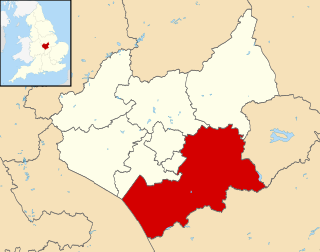
Ravenstone is a village and civil parish in the Borough of Milton Keynes and ceremonial county of Buckinghamshire, England. The village is about 2.5 miles (4 km) west of Olney, and 4 miles (6.4 km) north of Newport Pagnell and the northern boundary of the Milton Keynes urban area. The 2011 Census recorded the parish population as 209.

Brooke is a village and civil parish in the county of Rutland in the East Midlands of England. It is situated about three miles (4.8 km) south-west of Oakham. The village is near the source of the River Gwash near Braunston-in-Rutland; the river forms part of the parish boundary. From the 2011 census the population is included in the civil parish of Braunston-in-Rutland.

Tilton on the Hill is a village in the civil parish of Tilton on the Hill and Halstead in the Harborough district of Leicestershire. The population of the civil parish at the 2011 census was 601. It lies 2 miles north of the A47, on the B6047 to Melton Mowbray. Halstead civil parish was merged with Tilton in 1935, while the deserted medieval village of Whatborough was merged in 1994. Marefield remains a separate civil parish, but is part of the Tilton Electoral Ward. St Peter's Tilton, the Parish Church is in the parish of Halstead, as is the vicarage.
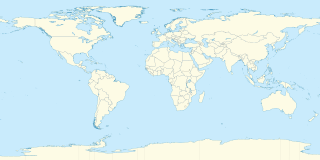
Barlestone is a village and civil parish in the Hinckley and Bosworth district of Leicestershire, England. The 2001 Census recorded a parish population of 2,471, increasing marginally to 2,481 at the 2011 census. The village adjoins the neighbouring village of Osbaston.
Newbold Verdon is a village and civil parish in the county of Leicestershire, England. The parish includes Newbold Heath to the north and Brascote to the south. Originally an agricultural centre Newbold Verdon grew in size during the 1850s with the expansion of coal mining in the area. That industry has now ceased leaving Newbold Verdon as primarily a commuter village. The 2001 census recorded a population of 3,193, which had reduced to 3,012 at the 2011 census.

Ballinskelligs, officially Baile an Sceilg, is a Gaeltacht village in the south-west of the Iveragh peninsula in County Kerry, Ireland. The townland is in the Civil Parish of Prior and was in the Poor law union of Cahersiveen.
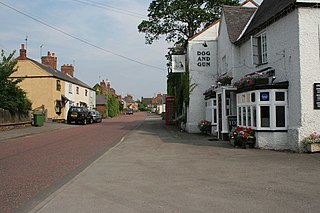
Kilby is a village and civil parish in the Blaby district of Leicestershire, England. It is the easternmost village in the district, and is 6 miles south east of Leicester. Nearby places are Fleckney, Arnesby, Wistow and Kilby Bridge.

Arncott or Arncot is a village and civil parish about 3 1⁄2 miles (5.6 km) southeast of Bicester in Oxfordshire. The 2011 Census recorded the parish's population as 1,738.

Marefield is a hamlet and civil parish in the Harborough district of Leicestershire, England. According to the 2001 census it had a population of 20. At the census 2011 the population remained less than 100 and is included in the civil parish of Owston and Newbold. It was also the birthplace of Wire drummer Robert Gotobed, and Thomas Hooker, one of the main founders of Connecticut, USA.

Worthington is a village and civil parish in North West Leicestershire, England, about 4 miles (6.4 km) north of the town of Coalville and a similar distance north-east of the market town of Ashby-de-la-Zouch. The population of the civil parish at the 2011 census was 1,461. The village is about 5 miles (8 km) from East Midlands Airport and junction 23a of the M1 motorway where it meets the A42 road. The parish also includes the hamlet of Newbold.
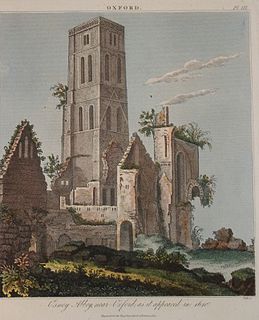
Osney Abbey or Oseney Abbey, later Osney Cathedral, was a house of Augustinian canons at Osney in Oxfordshire. The site is south of the modern Botley Road, down Mill Street by Osney Cemetery, next to the railway line just south of Oxford station. It was founded as a priory in 1129, becoming an abbey around 1154. It was dissolved in 1539 but was created a cathedral, the last abbot Robert King becoming the first Bishop of Oxford. The see was transferred to the new foundation of Christ Church in 1545 and the building fell into ruin. It was one of the four renowned monastic houses of medieval Oxford, along with St Frideswide's Priory, Rewley and Godstow.

Owston Ferry is a village and civil parish in North Lincolnshire, England. It is situated on the west bank of the River Trent, and 9 miles (14 km) north from Gainsborough. It had a total resident population of 1,128 in 2001 including Kelfield. This increased to 1,328 at the 2011 census. Sometimes referred to as Owston or Ferry, the village forms part of the Isle of Axholme. It is bounded to the west by the A161 road and the village of Haxey. The River Trent is directly to the east. To the north, beyond a number of hamlets and villages, lies the River Humber. West Butterwick was originally a part of the township of Owston.
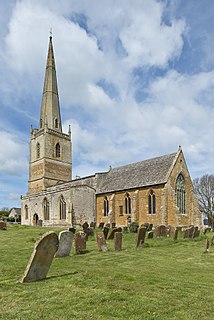
Tredington is a village and civil parish on the River Stour in Warwickshire, England. The village is 2 miles (3 km) north of Shipston-on-Stour. The civil parish includes the village of Newbold on Stour and hamlets of Armscote, Blackwell and Darlingscott. The 2011 Census recorded the parish population as 1,422.
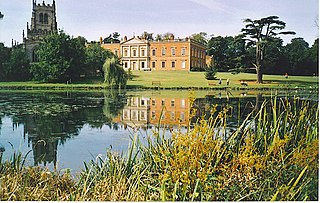
Staunton Harold is a civil parish in North West Leicestershire about 3 miles (5 km) north of Ashby-de-la-Zouch. The parish is on the county boundary with Derbyshire and about 9 miles (14 km) south of Derby. The 2011 Census recorded the parish's population as 141.

Loddington is a village and civil parish in the Harborough district of Leicestershire. It is on the county boundary with Rutland, and the nearest town is Oakham in Rutland, 6 miles (10 km) to the northeast.

Owston Abbey was an Augustinian monastery in Owston, Leicestershire, England.

The Abbey of Saint Mary de Pratis, more commonly known as Leicester Abbey, was an Augustinian religious house in the city of Leicester, in the East Midlands of England. The abbey was founded in the 12th century by the Robert de Beaumont, 2nd Earl of Leicester, and grew to become the wealthiest religious establishment within Leicestershire. Through patronage and donations the abbey gained the advowsons of countless churches throughout England, and acquired a considerable amount of land, and several manorial lordships. Leicester Abbey also maintained a cell at Cockerham Priory, in Lancashire. The Abbey's prosperity was boosted though the passage of special privileges by both the English Kings and the Pope. These included an exemption from sending representatives to parliament and from paying tithe on certain land and livestock. Despite its privileges and sizeable landed estates, from the late 14th century the abbey began to suffer financially and was forced to lease out its estates. The worsening financial situation was exacerbated throughout the 15th century and early 16th century by a series of incompetent, corrupt and extravagant abbots. By 1535 the abbey's considerable income was exceeded by even more considerable debts.



